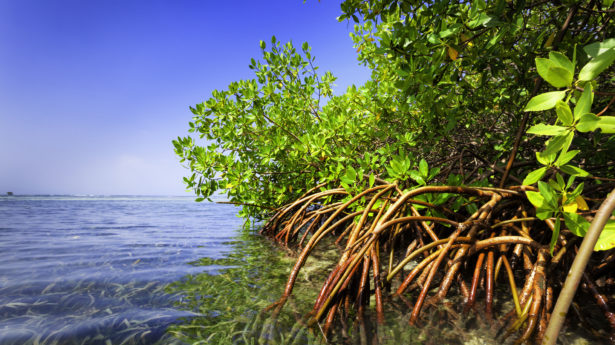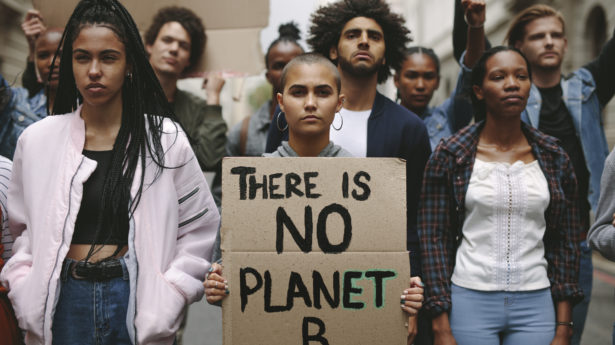The Unitarian Universalist Service Committee advances human rights through grassroots collaborations.
Indigenous Communities Demand Action as Tribal Lands Subside (Part 1)
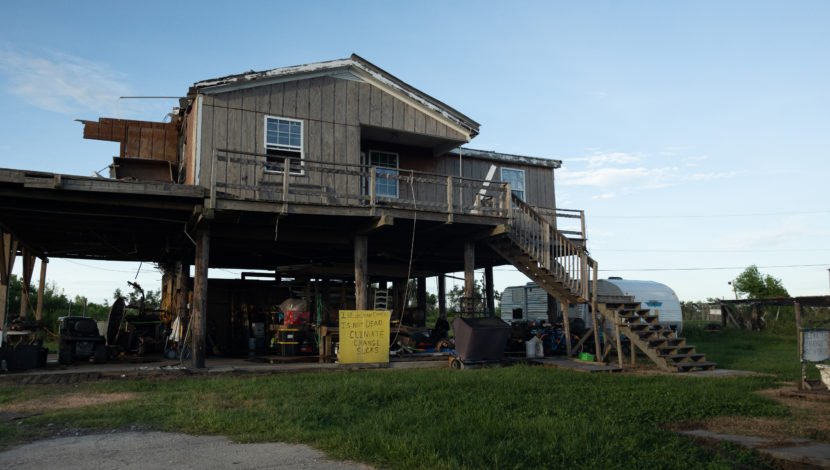
By on August 7, 2022
Tuesday, August 9 is the International Day of the World’s Indigenous Peoples. In honor of this holiday, UUSC is documenting several Indigenous tribes’ fight for justice as they battle environmental racism and climate change. This is part one of a two-part series.
Read part two and scroll through a photo essay highlighting the lived experience of Indigenous peoples in southern Louisiana.
UUSC has a firm commitment to supporting Black, Indigenous, and people of color (BIPOC) communities who are experiencing the impacts of climate change and environmental racism.
In southern Louisiana, it’s a battle on three fronts. Tribal leaders must quickly adapt to increasingly violent storms such as Hurricane Ida; these storms cause incalculable damage to entire communities. We call climate change impacts like this rapid-onset climate-forced displacement. Hurricanes, tornadoes, earthquakes, and tsunamis are all forms of climate change that can displace thousands of people in a matter of hours.
Second, sacred lands are slowly sinking into lakes, bayous and the ocean, which experts call subsidence—an example of slow-onset climate-forced displacement. As these lands sink, the area becomes uninhabitable; the alternative to displacement involves members of the tribes and other community members determining a way of staying in place.
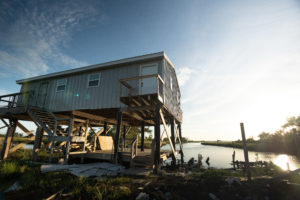
Both battles are ones of humans versus nature. The third battle is one that is human made: environmental racism. Tribal communities are held in such low regard by parish, state, and federal officials, that when storms and subsidence threaten communities year after year, tribal leaders have learned to never expect investments in rebuilding homes, schools, and other important structures. They pay their tax dollars into a system that they know will never come to their aid.
Oil and gas drilling, highly prevalent in these areas, have contributed to a deep instability in the earth. As more extractive practices disturb the earth, the land degrades and eventually sinks. The bayou and wetlands gradually overtake spaces that used to be farms and neighborhoods. Excess salt in groundwater also prevents vegetation from growing while a decrease in barrier islands makes it easier for land to submerge into surrounding bodies of water.
The changing topography makes these communities more susceptible to flooding and hurricane damage and also deeply impacts the ecosystem, which makes it difficult to hunt, fish, feed cattle, and grow crops.
***
For hundreds of years, Indigenous tribes have inhabited the southern coast of what is now Louisiana. However, with the eventual colonization of the area in the 1600s, the tribes were gradually forced to the very edge of the state.
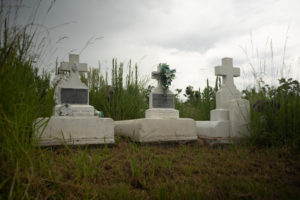
Currently, there are just a handful of tribes still in the area, the largest being the United Houma Nation, which has roughly 17,000 members in the region. The Pointe-Au-Chien Indian Tribal Community has 800 members; the 1,000 members of Biloxi-Chitimacha-Choctaw Confederation of Muskogees occupy Lafourche Parish, Dulac/Grand Callou, and Isle de Jean Charles.
Look at a map of southern Louisiana over the last 100 years and you’ll notice that much of the lush green land of the region has sunk underwater. Climate change has quickly ushered in an era of rapid land loss. As tribes have adapted to receding lands, they’ve been forced to either evacuate their communities or figure out novel ways of remaining in place.
Take a drive through any community in the southern part of the state—from Montegut to Pointe-Au-Chien to Chauvin—and you’ll lose count of the number of houses that have been raised on stilts to protect the structures from flooding during storms. Locals will tell you that certain kinds of fish that used to be plentiful are now gone. Cemeteries are slowly sinking into bayous and lakes. Blue tarps serve as makeshift roofs for many houses—a lack of funding and investment in these areas means that many homeowners cannot afford to rebuild their homes.
Many of the stories are the same: If you have homeowners insurance, the Federal Emergency Management Agency (FEMA) will not reimburse you for damage caused by hurricanes or flooding. You’ll see numerous houses in disrepair from storm damage flanked by small trailers—these have become the new homes of those displaced from their houses.
In part two of the series, we take a visual tour of Indigenous communities in southern Louisiana.
Image Credit: Craig Richard
